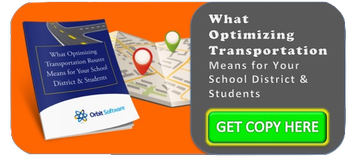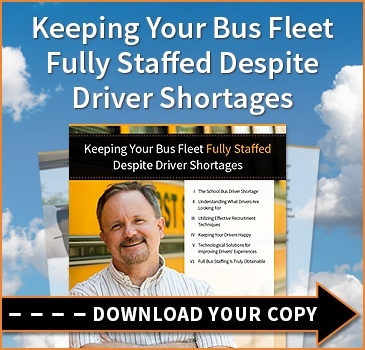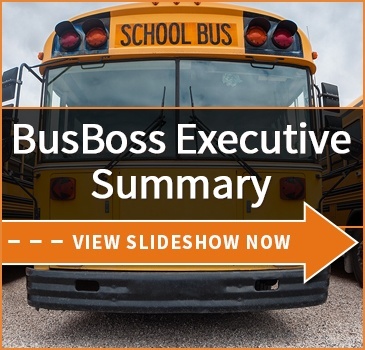10 Signs Your School Needs More Efficient Bus Routing
published on January 31, 2014 by Sonia Mastros
bus routing software, bus routing, school bus routing software
Students, parents, teachers, and schools all rely on a smoothly operating bus system so as to 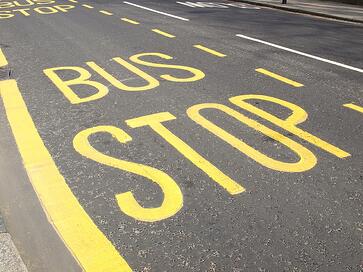 spend less time worrying about getting to school and back and more time focusing on bettering their lives. However, when a bus route is inefficient, it costs both students their precious time as well large amounts of a transportation director's money and funding. Here are ten signs that one of your bus routes is inefficient and some tricks to try help alleviate problems, deliver students on a better time schedule, and save interested parties valuable money on gas, maintenance, and bus driver wages.
spend less time worrying about getting to school and back and more time focusing on bettering their lives. However, when a bus route is inefficient, it costs both students their precious time as well large amounts of a transportation director's money and funding. Here are ten signs that one of your bus routes is inefficient and some tricks to try help alleviate problems, deliver students on a better time schedule, and save interested parties valuable money on gas, maintenance, and bus driver wages.
#1 The Non-Loop
The ideal pattern for transporting students is to have the buses leave the school or garage, cut out an arc of the school district, and then arrive at school as its final destination. If the bus finds itself back tracking or taking a wide variety of rights and lefts through a school district, this is a sign of routing inefficiency. A transportation manager can use GPS to determine the quickest routes. All pick up stops should then be put on that determined route that normally services middle school and elementary students over a mile, and high school students over 2 miles away.
#2 Respect the Weather, Respect Safety
During winter months in the Northern states or monsoon season in the South, weather can play a big role in buses being late. If buses are getting trapped in snow banks or children are being dropped off late due to the rain, then consider taking a route that is better maintained. A good GPS system designed for bus routing can help determine which roads are well-plowed with good rain run-off control as well as alternate routes to children's homes if a usual route becomes slow or impassible.
#3 Running More Buses Than Necessary
All buses should be at the very least 75% filled to capacity, or else it is costing the transportation manager money in gas. Consider using smaller buses or vans for less crowded routes, or combining two non-crowded routes.
#4 Students Late Getting Off The Bus
While many school districts allow a bus drivers to call in to excuse students, that really should only be used in case of emergencies. If school children show up late due to the bus more than once or twice a month, consider giving the driver more time to complete their route by starting their run earlier.
#5 More Than 2 Hours of Transit Time
While some areas pull students from rural areas and require long transits, these are the exceptions. Students need to get home to be able to do their school work and eventually sleep to rest up for the next day. If they arrive home two hours late, and have to be at the bus 2 hours early, this is highly inefficient and eats into the student's life and compromises their academic performance.
#6 Wide Transportation Windows
There are a lot of factors that affect the road and traffic conditions. Sometimes students can show up a full twenty minutes early. However if a superintendent finds that buses have over a 20 minute window when they arrive at school, this could be due to route planning inefficiencies such as left turns during rush hour, or accessing highways when they tend to jam up. Routing supervisors can tighten this up by using GPS that tracks traffic patterns.
#7 Overcrowded Routes.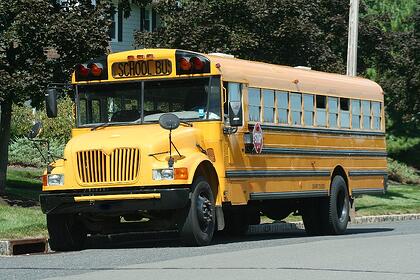
While there is technically no law in most states about how many students can sit in one seat, if there are on average three students per seat, and especially if kids are standing in the rows, this is an overcrowded bus route. If the bus route is already drawn efficiently consider having a second bus trail behind too balance the loads. When there is an average of two students per seat, that is the sign of an efficient bus route at capacity.
#8 Bus Drivers Not Adhering to Driving Laws
While many GPS tools allow transportation managers and business owners to watch over their drivers, it is important to take frequent conflicts with the law such as not slowing down at railroad crossings or speeding as a sign that maybe the driver is on a route that doesn't allow them to make it to school on time. Consider sending them out twenty minutes earlier and see if the driver doesn't approach their route safer. If they still drive in that irresponsible manner, consider replacing the driver with a more responsible one and see if the rules aren't adhered to.
#9 Avoiding Unpredictable Roads and Constructions Zones
Avoid areas where roads cross railroad tracks as that can delay a bus route by up to twenty minutes if a long freight train should pass through. Likewise it is wise for transportation directors to use their routing software to schedule routes around road construction or roads prone to flooding during certain seasons.
#10 Entrance or Exit Congestion
Even when buses are arriving early enough to give students plenty of time to get to class, if there isn't an easy way for them to dock and leave, this can lead to major traffic hold-ups. This is especially true when parents use the bus zone and refuse to leave. Consider setting up two zones for arriving and leaving buses. Another common technique is to put an employee on traffic duty to stop the flow of car traffic to allow a few buses at a time to slip out safely.


